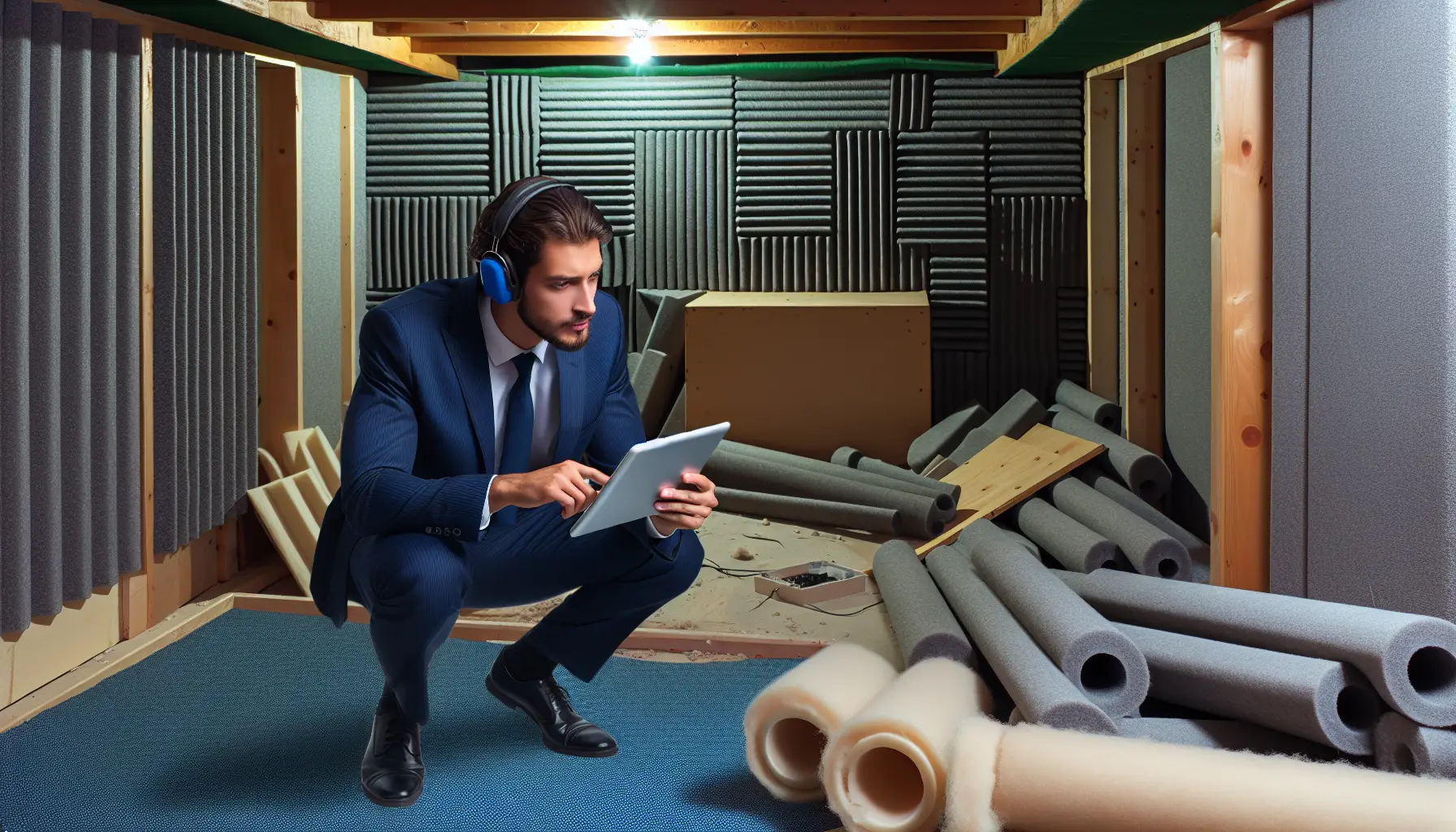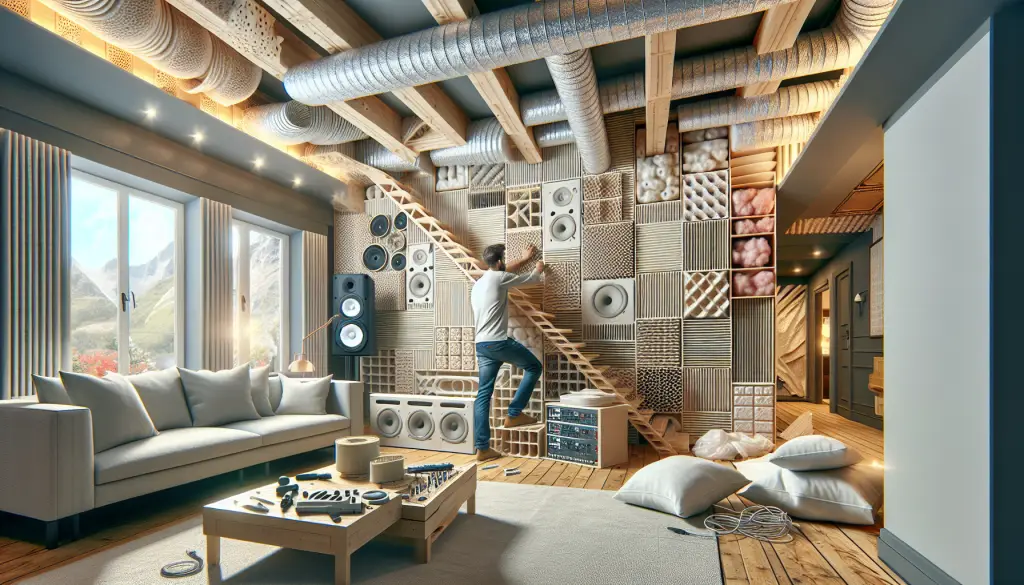The Importance of Sound Insulation in Basement Conversions
Basement conversions have become an increasingly popular way to maximise living spaces. Whether you’re creating a home theatre, a guest bedroom, or a home office, ensuring effective sound insulation is crucial. Proper basement soundproofing solutions not only enhance the comfort of the space but also ensure that noise does not transfer to other parts of the house.
Understanding Sound Transmission in Basements
Before diving into basement soundproofing solutions, it’s vital to understand how sound travels within a building. Sound can travel through:
- Airborne pathways (e.g., voices, music)
- Structural pathways (e.g., footsteps, vibrations)
- Flanking paths (e.g., around doors, through floor joists)
Knowing these paths can help you tackle the sound insulation at multiple points, ensuring a quieter and more serene space.
Choosing the Right Materials for Basement Soundproofing
Selecting appropriate materials is fundamental in achieving effective sound insulation during basement conversions. Common materials used include:
- Acoustic Insulation Batts: These are designed to fit between wall studs and joists.
- Mass Loaded Vinyl (MLV): A dense, flexible material that can be applied to walls and ceilings.
- Acoustic Panels: These absorb sound and can be installed on walls, ceilings, and floors.
- Resilient Channels: These create a decoupling effect, reducing sound transfer through structural components.
Acoustic Insulation Batts
One of the first steps in soundproofing a basement is to install acoustic insulation batts within the wall cavities. These batts are specifically designed to absorb sound waves, preventing them from passing through walls. Be sure to fit them tightly between the studs for maximum efficiency.
Mass Loaded Vinyl (MLV)
Another excellent basement soundproofing solution is Mass Loaded Vinyl. This material is both dense and flexible, making it perfect for reducing noise transmission through walls and ceilings. Simply attach MLV over the existing drywall, then add another layer of drywall over it.
Implementing Structural Modifications for Better Soundproofing
Modifying the structure of your basement can dramatically improve its sound insulation. Key strategies include:
- Double Stud Walls: Building a wall within a wall to create an air gap, boosting sound isolation.
- Staggered Stud Walls: Offsetting studs to reduce direct sound paths through the wall.
- Floating Floors: Installing layers that decouple the floor from the basement’s foundation.
Double Stud Walls
Double stud walls involve constructing two separate walls parallel to each other. This creates a significant air gap that acts as a sound barrier. Ensure each wall has its own set of studs, and fill the space with high-density insulation for optimal results.
Floating Floors
Creating a floating floor involves installing acoustic layers under the flooring. This layer absorbs vibrations and reduces impact noise. Use materials such as rubber underlayments or specialised floating floor systems that include multiple layers of soundproofing material.
Sealing Gaps and Cracks for Enhanced Soundproofing
Even with the best materials and structural modifications, sound can still find its way through small gaps and cracks. Effective basement soundproofing solutions must include sealing all potential sound leaks.
- Acoustic Sealant: A flexible, non-hardening sealant that stays pliable to absorb sound waves.
- Door Sweeps: Adding sweeps to the bottom of doors to prevent sound from escaping.
- Weatherstripping: Sealing around windows and doors to block sound transmission.
Acoustic Sealant
Acoustic sealant is used to fill gaps and seams between drywall, around electrical outlets, and other penetrations. This specialised sealant remains flexible, allowing it to absorb and block sound waves effectively. Always opt for high-quality, specialised acoustic sealant for the best results.
Advanced Soundproofing Techniques for Basement Conversions
For those looking to take their basement soundproofing solutions to the next level, advanced techniques can be implemented. These include:
- Soundproof Drywall: Enhanced drywall that includes additional layers of gypsum and viscoelastic compounds.
- Green Glue Damping Compound: Applied between layers of drywall to dissipate sound energy.
Soundproof Drywall
Using soundproof drywall can significantly reduce noise transmission. This type of drywall is denser than regular drywall and often incorporates layers of gypsum and viscoelastic compounds, which effectively block sound. When paired with other soundproofing measures, it provides notable improvements in sound isolation.
Green Glue Damping Compound
Green Glue Damping Compound is a noise-proofing product applied between layers of drywall, plywood, or subflooring. It works by converting sound energy into small amounts of heat, thereby reducing noise. This compound is easy to apply and can make a significant difference when used as part of a comprehensive soundproofing strategy.
Incorporating Acoustic Panels and Treatments
In addition to structural modifications and sealing gaps, incorporating acoustic panels and treatments can further enhance the sound insulation of basement conversions. Common options include:
- Acoustic Foam Panels: Ideal for absorbing mid to high frequencies.
- Fabric-Wrapped Panels: Enhance aesthetics while providing excellent sound absorption.
- Bass Traps: Designed to absorb low-frequency sound energy.
Acoustic Foam Panels
Acoustic foam panels are effective at absorbing sound, particularly in the mid to high-frequency range. These panels can be installed on walls and ceilings, particularly in corners where sound tends to build up. They come in various shapes and sizes, allowing for both functional and aesthetically pleasing designs.
Bass Traps
Bass traps are specialised acoustic treatments designed to absorb low-frequency sounds. They are essential in rooms where music is played, as these low frequencies can cause significant disturbances if not properly managed. Installing bass traps in the corners of your basement can dramatically improve sound quality and reduce noise transmission.

Basement Conversions Summary
Sound insulation is a critical component of any successful basement conversion. By understanding how sound travels, selecting the right materials, making essential structural modifications, and sealing gaps, you can create a serene, sound-isolated space in your basement. Implementing advanced techniques and acoustic treatments can further elevate the soundproofing performance. Don’t forget to employ products like acoustic sealants, door sweeps, and bass traps for an all-encompassing approach. With these strategies, Ratio Seven ensures that your basement conversion is both functional and comfortable.
FAQs
What are the best materials for soundproofing a basement?
The best materials for soundproofing a basement include acoustic insulation batts, Mass Loaded Vinyl (MLV), acoustic panels, and resilient channels. Each of these materials offers different benefits—acoustic batts and panels absorb sound, while MLV and resilient channels block and reduce sound transmission.
How can structural modifications improve basement soundproofing?
Structural modifications such as double stud walls and floating floors create barriers that reduce sound transmission. Double stud walls provide an additional air gap that acts as a sound barrier, while floating floors decouple the floor from the basement’s foundation, reducing structural noise.
Why is sealing gaps and cracks important in basement soundproofing?
Sealing gaps and cracks is essential because even small openings can allow significant sound transmission. Using acoustic sealants, door sweeps, and weatherstripping ensures that these gaps are effectively closed, enhancing the overall soundproofing performance of the basement.




